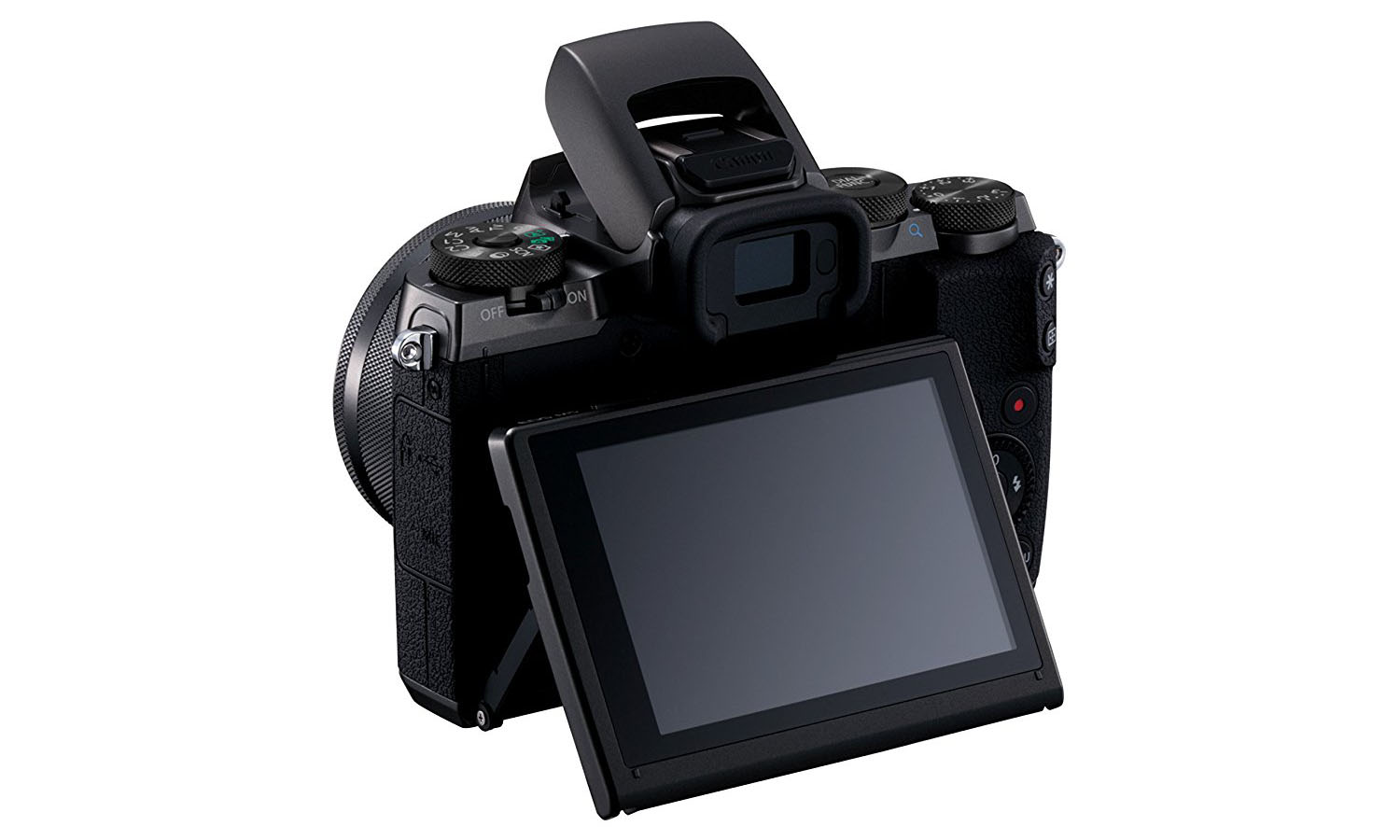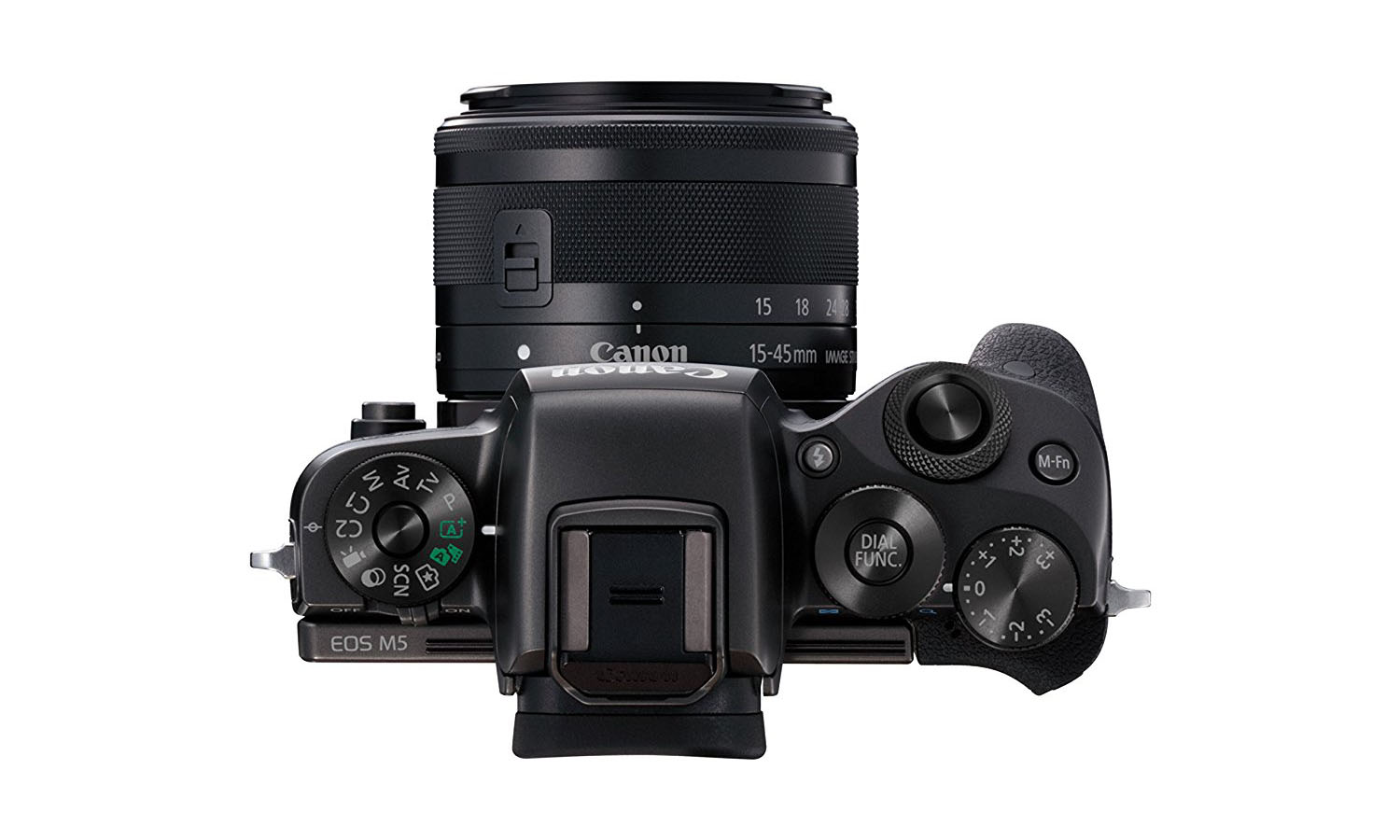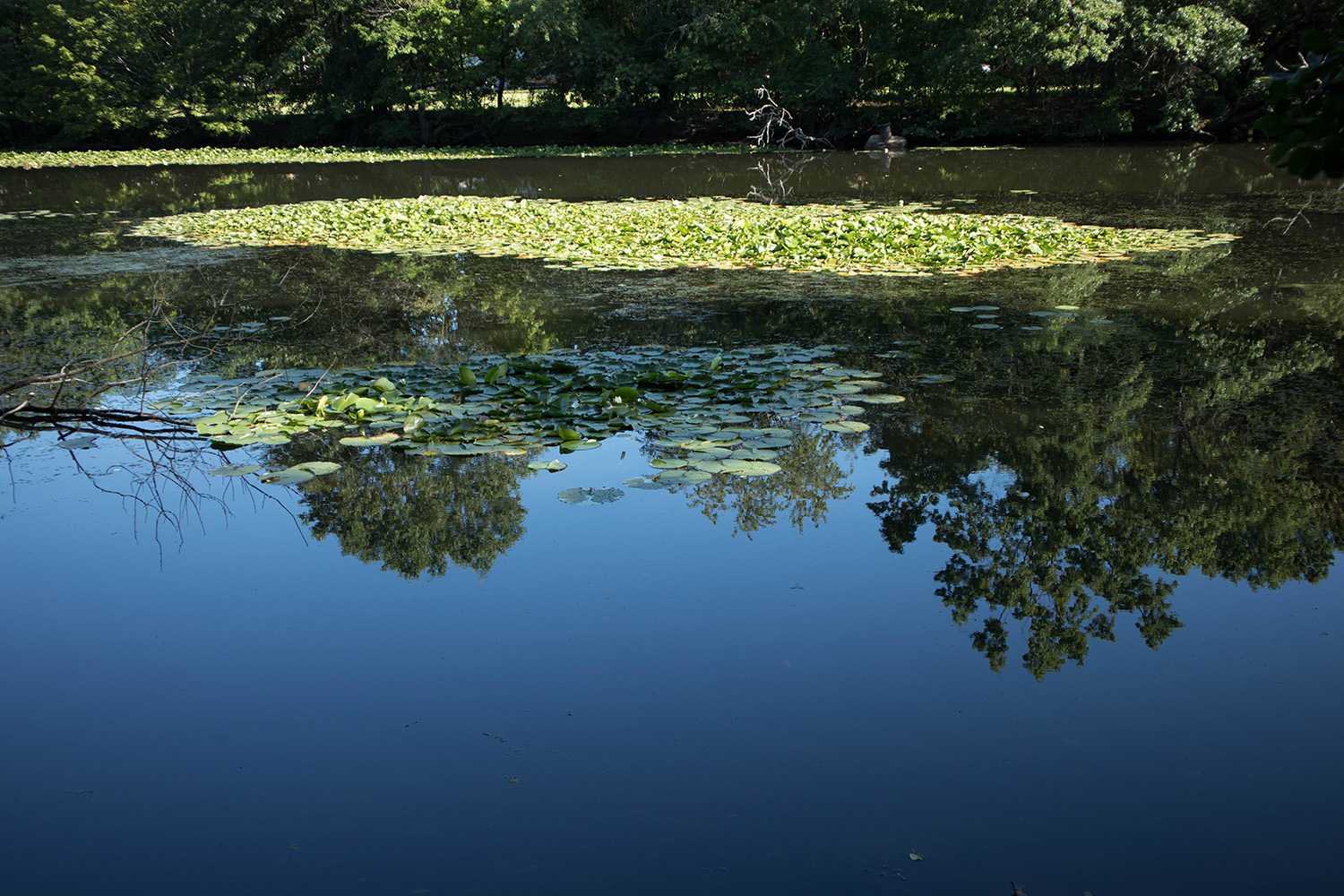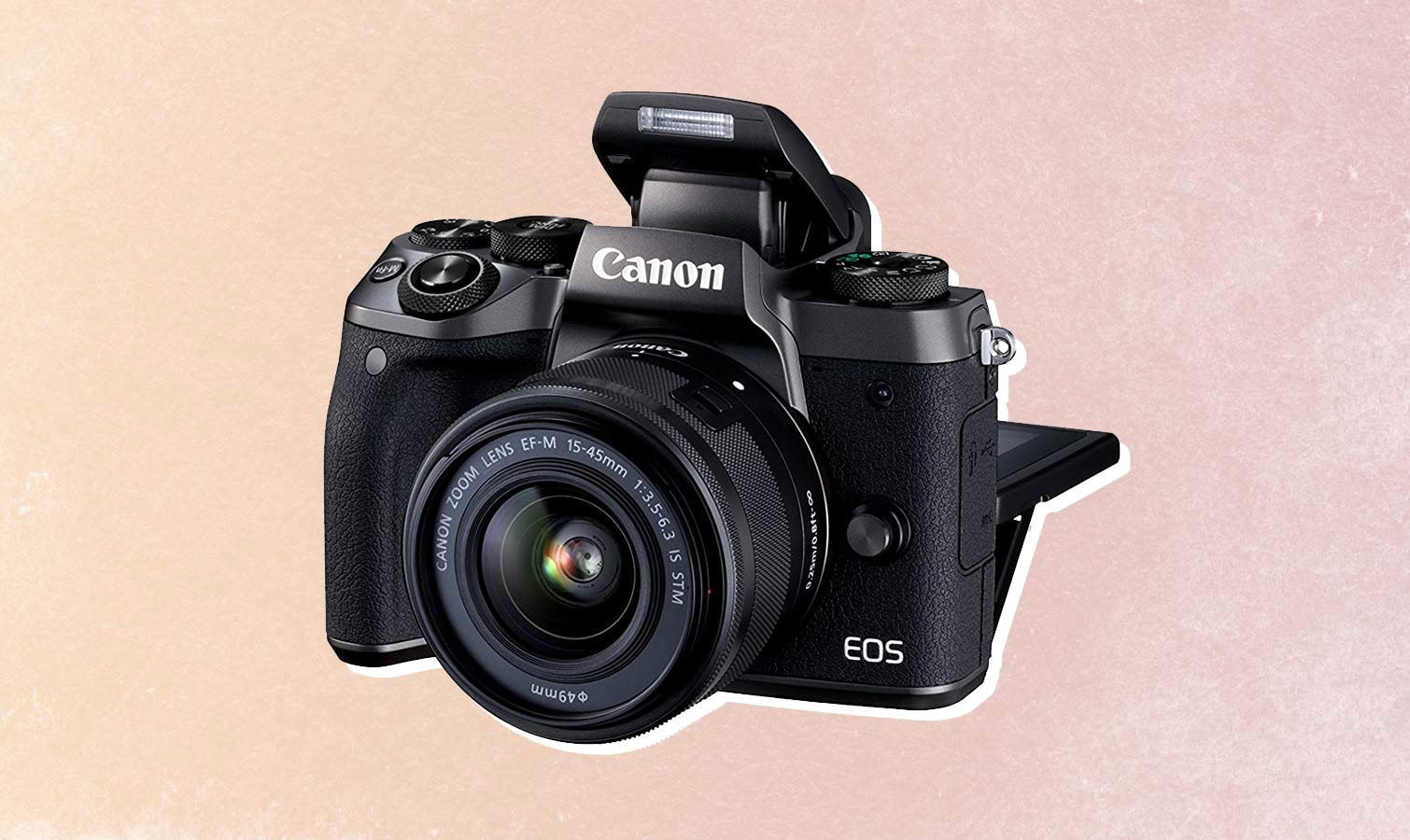Tom's Guide Verdict
The Canon EOS M5 is a nice combination of DSLR and mirrorless design, but it still has some rough edges.
Pros
- +
DSLR-like controls
- +
Can use EF-S lenses with optional adapter
- +
Compact size
Cons
- -
No 4K video
- -
Disappointing image and video quality in low light
- -
Awkward video-shutter placement makes for bumpy video starts
Why you can trust Tom's Guide
Canon's EOS M cameras have been something of a disappointment, failing to translate the company's expertise at making DSLRs into the mirrorless camera market. But the M5 shows that Canon is getting there: This camera has many of the benefits of its larger DSLR cousins (image quality, ease of control), while offering the advantages of mirrorless systems such as smaller, lighter bodies and ease of use. We tested the Canon M5 with the 15-45mm EF-M kit lens, a combination that retails for $1099.99, and found that while the new camera much improved over previous iterations, it's still not best in class.
Design
The Canon EOS M5 looks like one of the company's DSLR cameras shrunk in the wash. At 4.5 inches wide and 1.75 inches deep on the grip, it's about half an inch smaller than the Rebel SL2. Although the body is smaller, the M5 fits well into the hand and has the same plethora of control dials, buttons and knobs, including a mode dial on the right and two multipurpose control wheels on the left.
The 3.2-inch LCD screen of the M5 has a 1.6-million dot resolution and looks great. I found it easy to view in all but the brightest direct sun. This display also tips down and up 90 degrees, so you can use it for shooting from awkward angles. The hinge mechanism does feel a little fragile, like it could be too easily snapped off or broken if you dropped the camera with the screen folded out.

The viewfinder provides the same view, with a slightly higher-resolution screen. Again, the image preview and control screens here are clean and sharp, but I found that the eye sensor that triggers the viewfinder was a bit too sensitive, switching from LCD screen to eyepiece anytime an object went anywhere near it. You can disable this sensor and switch from one display to the other in the menu, but you can't change the sensitivity of the eye sensor itself.
Controls
The Canon EOS M5 offers a bewildering number of controls, but the large number of dials and buttons on the camera body makes it a little easier to access those controls. The front wheel around the shutter is used primarily to control shutter speed in TV mode or Aperture in AV mode. The rear wheel usually adjusts the ISO setting, although that can be changed by pressing the button in the wheel's middle. Because these dials can be accessed with the thumb and index finger, you can use the camera in full manual mode with one hand, a welcome feature. There is also an exposure-compensation control within reach of the thumb, useful for when you want to shoot in program mode but want to tweak for unusual lighting.

Most of the commonly used controls are available from the quick menu: Tap the Q SET button in the middle of the dial and options for white balance, ISO, color mode and other settings appear. Other options, however, are buried deep within the huge main menu, which requires a ridiculous amount of button pressing or screen tapping to navigate: The shooting section of this menu has eight screens of densely packed options. That means a lot of moving around inside menus to get to controls such as noise reduction.
You can customize the buttons to an extent (such as deciding if half-pressing the shutter button locks the exposure or not), but this device is nowhere near as customizable as Olympus cameras, which allow you to change the function of practically every button.
Get instant access to breaking news, the hottest reviews, great deals and helpful tips.
MORE: Camera Recommendations for All Kinds of Photographers
The 3.2-inch LCD screen also works as a touch screen. You can access any of the quick menu items by tapping the icon on the screen, but many of the icons are rather small and require a delicate touch to reach.
One control that is poorly placed is the video shutter, located on the back of the camera body near the menu ring. This is too low down to be reached without moving the right hand, so videos inevitably start and end with a shaky camera as you move your hand to retake hold of the grip.
Image Quality
The EOS M5 shoots images with a 24.2-megapixel CMOS, APS-C sized image sensor. That puts this camera on a par resolution-wise with most modern mirrorless camera systems. It produces images with a maximum resolution of 6000 x 4000 pixels or 1080p video at up to 60 frames per second. The camera has optical image stabilization, which is also becoming the norm for cameras in this class.

We tested the EOS M5 with a 14-45mm, f/3.5-6.3 EF-M mount lens that is sold as a kit lens. We captured images as JPEG and Raw where possible.
Daylight Results
The M5 shoots excellent images in daylight, with plenty of detail and bright, clean color. Using the nine picture modes, you can tweak the colors, although we found it generally better to shoot in the Standard color mode and adjust the color afterward. JPEG images had poor dynamic range; shadow details and highlights were often lost in the dark and light, making the image look flat and unattractive. If you work with the Raw files that the camera captures (alongside the JPEG images, if you have the space on the memory card), you can often extract much more detail by processing the Raw images in a program such as Photoshop. That's an extra level of hassle, though. In the image below, you can see how the camera captured the fine details of a flower, including a bug that is eating its way through the petal below the center.

Low-Light Results
Images captured in less-than-direct sunlight were still attractive, with good color and detail. However, as the light level fell further and the camera upped the ISO, the noise reduction became increasingly intrusive, blurring out fine details in images at ISO settings above 1600. You can push the ISO to an impressive 25,600, but because of the loss of detail, this really shouldn't be done unless absolutely required.

To show how the ISO affects the image quality, we photographed the full moon at different ISO settings, then enlarged the moon to show the noise. In the original image, the moon was about 140 pixels wide, or about 3 percent of the total image size.
Video Performance
The EOS M5 offers a good range of video features, capturing HD video at up to 60 frames per second. Image stabilization and autofocus are active while you're shooting, so handheld video doesn't look too jittery. There is one big feature that is missing from video: 4K. The EOS M5 can capture video at full-HD resolution, but not the higher, 4K resolution that many other cameras now support, such as the $599 Panasonic Lumix DMC-LX100.
Bright-Light Video
As it did in still photos, the EOS M5 captured very attractive video in bright lighting conditions, with excellent detail; bright, clean color; and smooth, natural motion. This was especially true with the full-HD/60 frames per second mode, which looked great when shown on a big-screen TV. We didn't have any problems with rolling shutter, the odd effect in which straight objects become curved because of the way the video signal is captured.
In low light, digital noise quickly became more visible and somewhat off-putting. It appeared as a shimmering effect in areas of flat color and made it look like dark skies were full of fireflies. Both of these effects were very distracting, so if you are looking to shoot videos by firelight or in the dim twilight, look elsewhere.
The camera does not capture great audio, picking up a slight buzzing noise from the image-stabilization and focus systems, because sound is captured by two tiny microphones near the lens. Fortunately, there is a 3.5mm microphone socket that allows you to connect a better microphone, such as the $99 Rode VideoMic Go that clips onto the flash hot shoe.
Autofocus & Speed
The M5 uses a new focus system called Dual Pixel, with both contrast- and phase-detection sensors built in to the image-sensor chip. This combination makes for better focusing in different lighting conditions (phase detection works better in low light, but contrast is often quicker). We found that this was generally the case; the kit lens quickly snapped into focus in use, and the focus point (or points) could be easily adjusted with the touch screen. Face tracking is also included; the camera will automatically detect and track faces in the on-screen image preview.

This camera could manage 9 frames per second with single-shot autofocus, and 7 fps with continual autofocus enabled. The device can't keep that speed up for long, though. After only 2 or 3 seconds, the camera had to pause to write images out to the memory card, so you have to time your shooting carefully.
Wireless
The M5 includes two wireless connections: 2.4GHz Wi-Fi b/g/n and a Bluetooth Smart connection. When paired with the Canon Camera Connect app (available on Android or iOS), these two make connecting easier. The Bluetooth Smart is used to make the initial connection, then the Wi-Fi kicks in for sending images and the live preview to the smartphone.
MORE: DSLR vs. Mirrorless Cameras: Which Is Better for You?
The system works better than most. You can connect the M5 to a smartphone and get a preview of an image significantly quicker than with most other systems.
Battery Life
The M5 is powered by the 1040-mAh LP-E17 battery that fits into the grip. Canon claims a life of 295 shots in standard mode, or 420 in eco mode. We managed a couple of days of shooting before the battery ran low. It can't, however, be charged while inside the camera; you have to remove it and use the included charger that plugs into a wall socket. Spare batteries will cost you about $50 for a Canon battery, or less than $10 for a third-party, compatible battery.
Kit Lens
The kit lens that we tested the EOS M5 with is a 15-45mm f/3.5-6.3 zoom lens. It offers acceptable image quality and is a good starting point for the aspiring photographer. We did find that images got rather soft at the edges at both the wide and zoom ends of the range, with a lot of detail fading into blue with the aperture wide open.
MORE: Best Mirrorless Cameras From Beginner to Pro
This lens includes a locking mechanism that shrinks it down to just 1.7 inches deep when not in use. Press in the locking button and twist the manual zoom ring, and the lens expands out to just under 2.5 inches deep.
You can also purchase the EOS M5 with an 18-150mm f/3.5-6.3 IS STM lens; this kit costs $1,299.
Lenses
The EOS M5 uses the Canon EF-M mount, and Canon itself offers 10 lenses for this relatively new mount. These range from the $349 11-22mm f/2 wide angle to the $349 55-200mm zoom lens, and a handful of fixed focal-length lenses. All of these are under $500, and most are under $300, so they are cheaper than most other types. If you have Canon lenses from a Canon DSLR camera, you'll need the EF or EF-S lens mount, which requires an additional $200 adapter. These EF/EF-S lenses can be fully controlled from the M5 camera; autofocus and image stabilization work just as well as they do on the DSLR cameras.
Bottom Line
There's a lot to like in the Canon EOS M5. It combines the controllability of a DSLR with the smaller size and weight of a mirrorless camera. It doesn't displace the Sony A6000 as our editor's pick for mirrorless camera, though, as it is more expensive, larger and doesn't shoot images of the same quality, especially in low light. In the mirrorless space, Canon has made some strides with the M5 but still has a ways to go.
Richard Baguley has been working as a technology writer and journalist since 1993. As well as contributing to Tom's Guide, he writes for Cnet, T3, Wired and many other publications.

